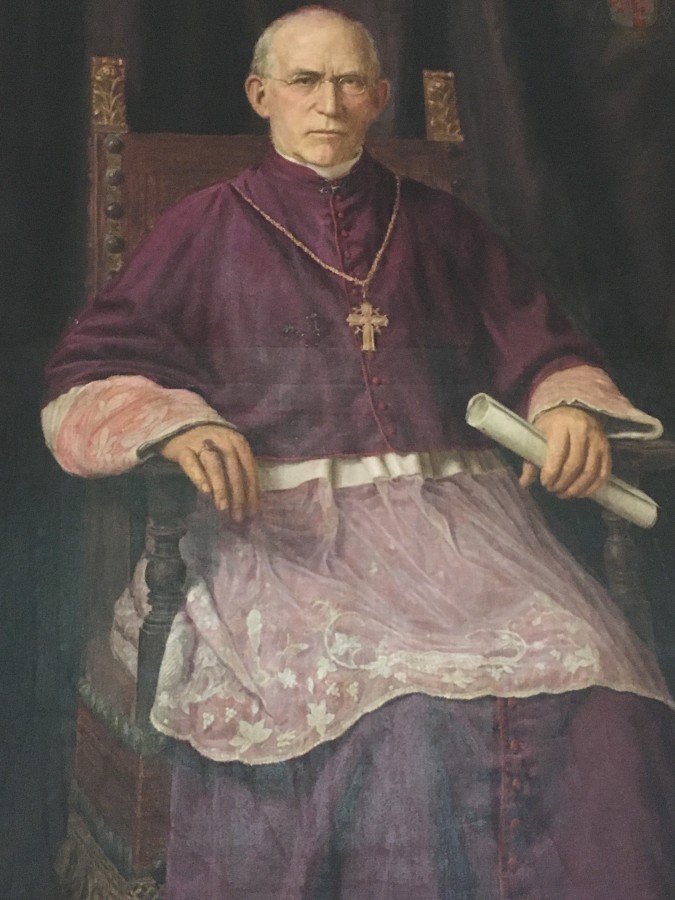Kieran’s Our City, Our Town Article,
Cork Independent, 9 September 2016
Cork’s New Bishop 1916
In continuing to explore Cork in 1916, this week one hundred years ago, the local newspapers were filled with the news the Assistant Bishop of Cork Daniel Cohalan (1858–1952) was to become the new Bishop of Cork following the death of Bishop Thomas Alphonsus O’Callaghan. Cohalan served as Bishop from 29 August 1916 to 24 August 1952 and he defined the sense of religion in the city during his time. Bishop Cohalan was born at Kilmichael, County Cork, in 1858, and his early school days were spent at St Vincent’s Seminary in the city, a school which gave many eminent scholars to the church. Subsequently Dr Cohalan went to Maynooth, and in 1883 was a curate at Kilbritain. In the following year he was professor at St Finbarr’s Seminary and chaplain to the Military Prison, Cork, after which he went to Tracton as curate.
From 1886 to 1914 Dr Cohalan was Professor of Dogmatic and Moral Theology at Maynooth, which led to his appointment as Assistant Bishop of Cork, subsequently becoming Vicar Capitular, and then Bishop of the Diocese. Dr Cohalan was recognised as a profound scholar, whose contributions to Catholic magazines and journals such as the Irish Ecclesiastical Record were respected and set the framework for Roman Catholic theology thinking in the country.
For many of his early years Cohalan found himself commenting on the nationalist independence struggles of the day. He attempted to take the middle ground in a struggle that was rapidly deteriorating into chaos and atrocity. His anti-violence attitude was the guiding principle in his episcopacy. He had a crucial role in condemning the 1916 rising and pressed that the Volunteers including Cork leaders Tomás MacCurtain and Terence McSwiney stand down in the face of superior Crown forces. Cohalan was eager to avoid bloodshed. In 1918 Bishop Cohalan campaigned against conscription into the British army. Whilst attending a public meeting in Cork, he made it clear that conscripting Irishmen to fight Britain’s wars was unacceptable.
The 1920 burning of Cork City by the Black and Tans (following the Dillon’s Cross and other local and regional ambushes) resulted in a city and region dominated by the gun and violence. It prompted Bishop Cohalan to issue a decree of excommunication against those who perpetrated violence in any form. It was issued in SS Mary’s and Anne’s North Cathedral on 12 December 1920. This did not calm the situation. The IRA was unhappy with the decision and the position of the local Catholic Church especially as a number of the clergy were active in the IRA. Cohalan remained steadfast on the controversy isolating himself from republican parishioners and clergy, even to the point of refusing a Catholic burial to any hunger striker after 1922. To underline his support for law and order, Cohalan welcomed the 1922 Treaty, which established the Free State, agreeing that it was not perfect but was a great “measure of freedom”. This support was preached publicly in the North Cathedral on 10 December 1922.
By the mid 1920′s the South Parish had grown in both population and area to a point where it could no longer function with a single church. In an effort to address the situation, Bishop Cohalan designated Turners Cross as the location for a second parish church to serve the ever-growing congregation. Commissioned in 1927, the church’s modern concrete architectural look initiated an enormous debate amongst those involved in the brick masons’ trade, which saw the use of concrete as cutting jobs for masons in the region. The architect was Chicago-born Barry Byrne (1883-1967) who was a former student of Frank Lloyd Wright. By the late 1920s Byrne had, designed three Catholic Churches in the US to acclaim and criticism. The model for Turners Cross was based on the Church of Christ the King, Tulsa, Oklahoma (1926).
Work on the Turners Cross site began in March 1929. Its heavy foundations went down 15 feet into a marshy stream-like area. A total of 1,200 tons of Condor brand of Portland cement were used in its construction. Its marble terrazzo floor is overlooked by the largest suspended ceiling in a European church and it also possesses the impressive John Storr-designed Christ the King sculpture at its entrance. The church was officially dedicated on 25 October 1931 and set a marker for the future development of large churches in Cork’s suburbs. The notable exception was Our Lady of Lourdes Church in Ballinlough, planning for which started possibly 2-3 years after Christ the King. As Ballinlough church was a chapel of ease to St Michael’s Blackrock, there was a return to a traditional-looking and simple structure (opened in 1938).
In 1937 Cohalan turned his attention to the role of the Protestant churches in Ireland. He encouraged the Protestant community of Cork to unite with its Catholic brethren to achieve Christian unity. He even went so far as to suggest to the Protestant Bishop of Cork that they merge the dioceses between them with St Finbarr’s Cathedral presiding over southside districts and the North Cathedral presiding over northside districts. All the Protestant Bishop had to do was to convert to Catholicism (!).
Captions:
860a. Portrait of Bishop of Cork, Daniel Cohalan (source: Farranferris Campus, Cork)
860b. Christ the King Church & the newly constructed Capwell Road, c.1931 (source: Christ the King Church, Cork)

